Hello all,
Welcome back to my newsletter. I hope you’re holding up in whatever flavor of isolation and distancing you’re currently maintaining — I can hardly believe that we’ve entered May.
As some of you know, I’m currently alone in a house and have been for something around forty-five days. For all that I’m a complete introvert, I still can’t quite get used to this way of life. I suppose a ghost haunting empty halls must feel much the same way I do. On the nicer days, I’ve taken to setting up a chair on the front path so I can have properly distanced conversations with the neighbors. We’re supposed to get into the seventies this weekend, so I hope to spend a lot of my time outside.
Thanks for reading!
-Matt
Books
At a reader’s request, I’ve added publisher info after author name.
What We Talk About When We Talk About Love by Raymond Carver (Vintage)

What We Talk About When We Talk About Love is one of my mother’s favorite books, so I’m embarrassed to say that I haven’t read any Carver since he was assigned in junior-year English back in high school. I’m glad I finally came around to Carver, but I’m glad I waited.
The booze and the cigarettes and the sex and the sadness and the clipped conversations I knew to expect, but What We Talk About When We Talk About Love is better and stranger than the book I thought I’d be reading. I’d always wrongly associated Carver with generic suburban America; I hadn’t realized how much he wrote about this country’s Western landscapes.
It’s a more violent book than I thought it would be, and not violent for violence’s sake. I was shocked when one story about disaffected and casually misogynistic men, in the last half-page, became a story of murder, and I didn’t expect “So Much Water, So Close to Home” to carry such strange echoes of Deliverance.
In my last newsletter, I wrote about Barry Hannah’s Airships, an important and influential collection, like this one thoroughly edited by Gordon Lish, that drove me up a wall. I’m happy to report that my experience with Raymond Carver was a happier one.
I know I’ll be coming back to this one for many years.
Sempre Susan: A Memoir of Susan Sontag by Sigrid Nunez (Riverhead)
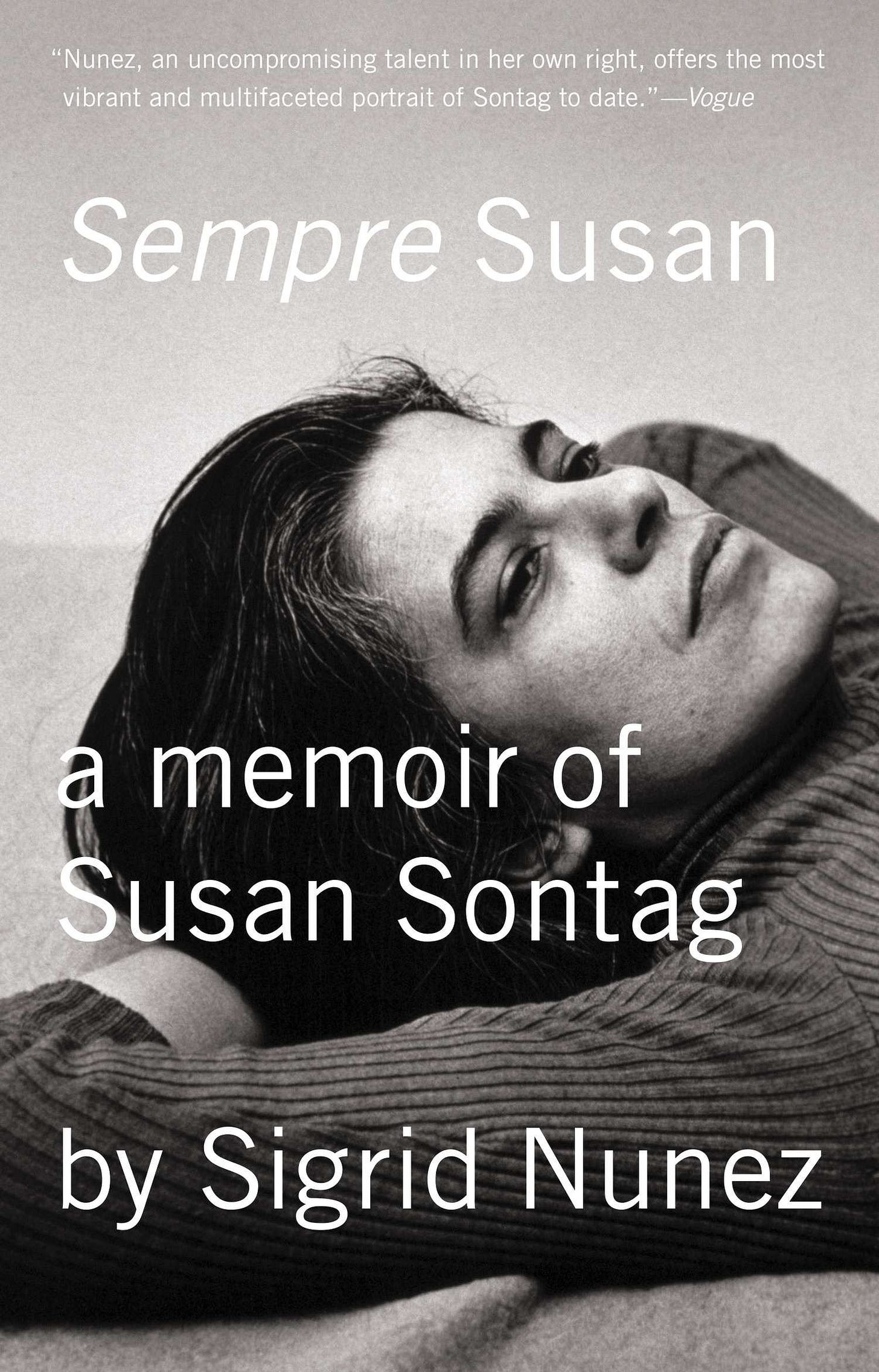
If you’re at all interested in the life and opinions of Susan Sontag, this short volume is essential. Nunez dated Sontag’s son and lived with him and his mother in the seventies — after Sontag’s fame, but before her fortune. I’m pretty much the ideal reader for this material; I enjoy decades-old literary gossip and admire Sontag’s essays. Nunez admits that “almost everyone in this memoir is dead,” but I’ve met people who knew the principals.
So much for my enjoyment of the book. If you’d never heard of Sontag, I think Sempre Susan would still repay your attention. Susan Sontag was cantankerous, contradictory, and brilliant, and Nunez explains her fascination without denying Sontag’s failings. She’s particularly good on Sontag’s alleged humorlessness and on her concomitant ideal of “seriousness.”
I’ve been in my parents’ house since March 14, but they’re not here and will not be for another month. There’s a growing pile of books I’ve read that I think they might enjoy; this is going on it.
La Place de la Concorde Suisse by John McPhee (FSG)

I will read John McPhee on almost anything — oranges, atomic energy, airships, bark canoes, Russian art, doctors in Maine, and islands in Scotland. One of these days, I’m sure, I’ll even take up one of his books on sports. La Place de la Concorde Suisse is about the Swiss Army towards the tail end of the Cold War; McPhee accompanies some of Switzerland’s citizen-soldiers on live-fire exercises among the mountains, massifs, and valleys of this fanatically neutral country. McPhee quotes the immortal Orson Welles line about “five hundred years of democracy and peace,” then complicates it. The Swiss, as it turns out, believe in enforcing neutrality by making any invasion too costly to consider: They tunnel into mountains, train hidden batteries on their railways and highways, conceal explosive charges in their bridges, and construct bunkers to withstand nuclear assault.
This isn’t my favorite McPhee book, but, like all of his I’ve read, it’s rewarding and enjoyable. And it seems strangely topical: This is, after all, the story of a society coming together to prepare for, and avert, a disaster.
Movies
Married to the Mob (1988, d. Jonathan Demme) (For rental on streaming services)
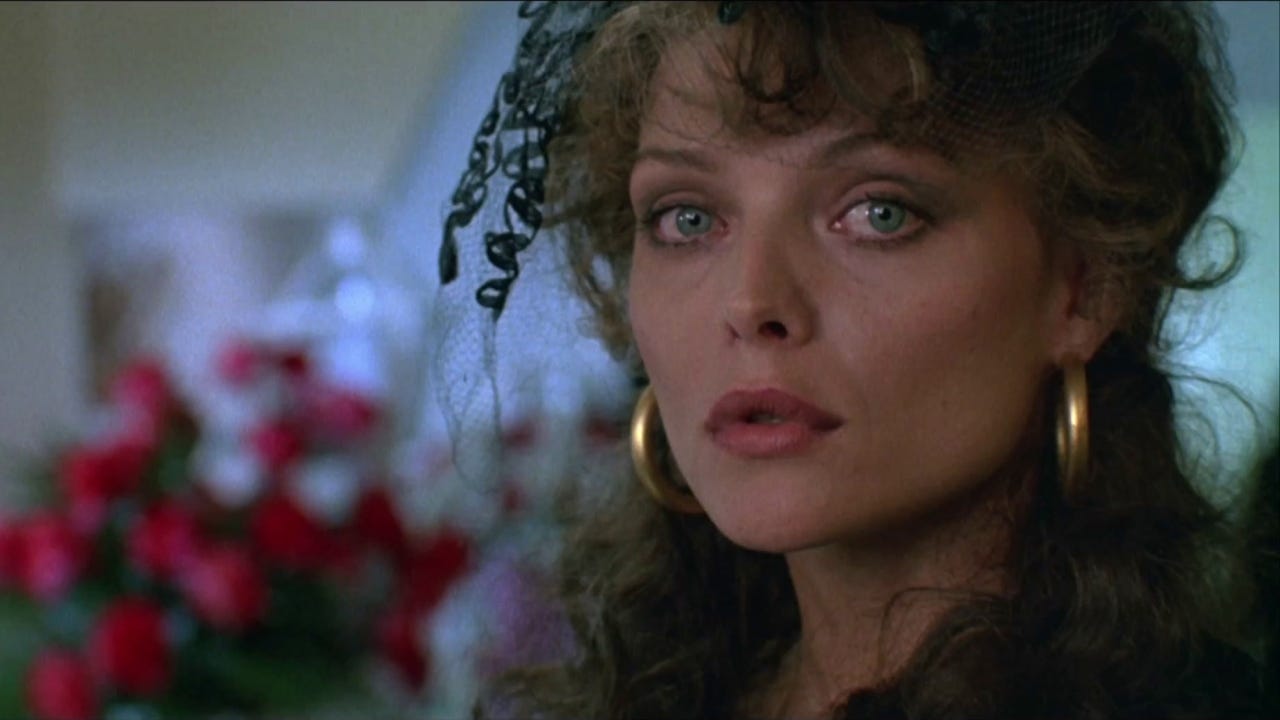
When Jonathan Demme died in 2017, the cinephile consensus was that we hadn’t quite appreciated him when we had him. How had the movie world managed to neglect the director of The Silence of the Lambs, Stop Making Sense, Something Wild, and Rachel Getting Married? Perhaps we wrote him off as terminally middlebrow after Philadelphia?
Married to the Mob came a few years after Something Wild, and, like that film, mixes comedy and thriller. Michelle Pfeiffer plays the widow of a mob hitman, trying to cut criminal ties after her husband’s death; Matthew Modine plays the scrupulous, nerdy, and Dale Cooper-ish FBI agent assigned to follow her; and Dean Stockwell plays the henpecked mob boss with designs on Pfeiffer.
This isn’t Demme’s best film, nor his most ambitious, but it’s a joy from start to finish. The romantic leads charm, while. Stockwell deftly combines menace, vulgarity, and vulnerability. The vulnerability mainly relates to Mercedes Ruehl, who plays his psychotically jealous wife.
The production design is a wonder: I especially enjoyed the glimpses of a mob underling’s home (boxes of stolen televisions and gilded furniture) and of a Roman-themed love hotel (the headboard on the king-size bed has “Veni, Veni, Veni” in Roman font).
The credit sequence does something I’ve never seen before. Plenty of movies show clips from the concluded movie during the credits, and anyone who has seen a post-Police Story Jackie Chan film knows the joy of a credit sequence blooper reel. Married to the Mob’s credits recapitulate the film’s plot with chronologically arranged alternate takes and cut sequences — I guess Demme shot a lot of extra footage and didn’t want it to go to waste?
The Old Dark House (1932, d. James Whale) (For rental on streaming services)
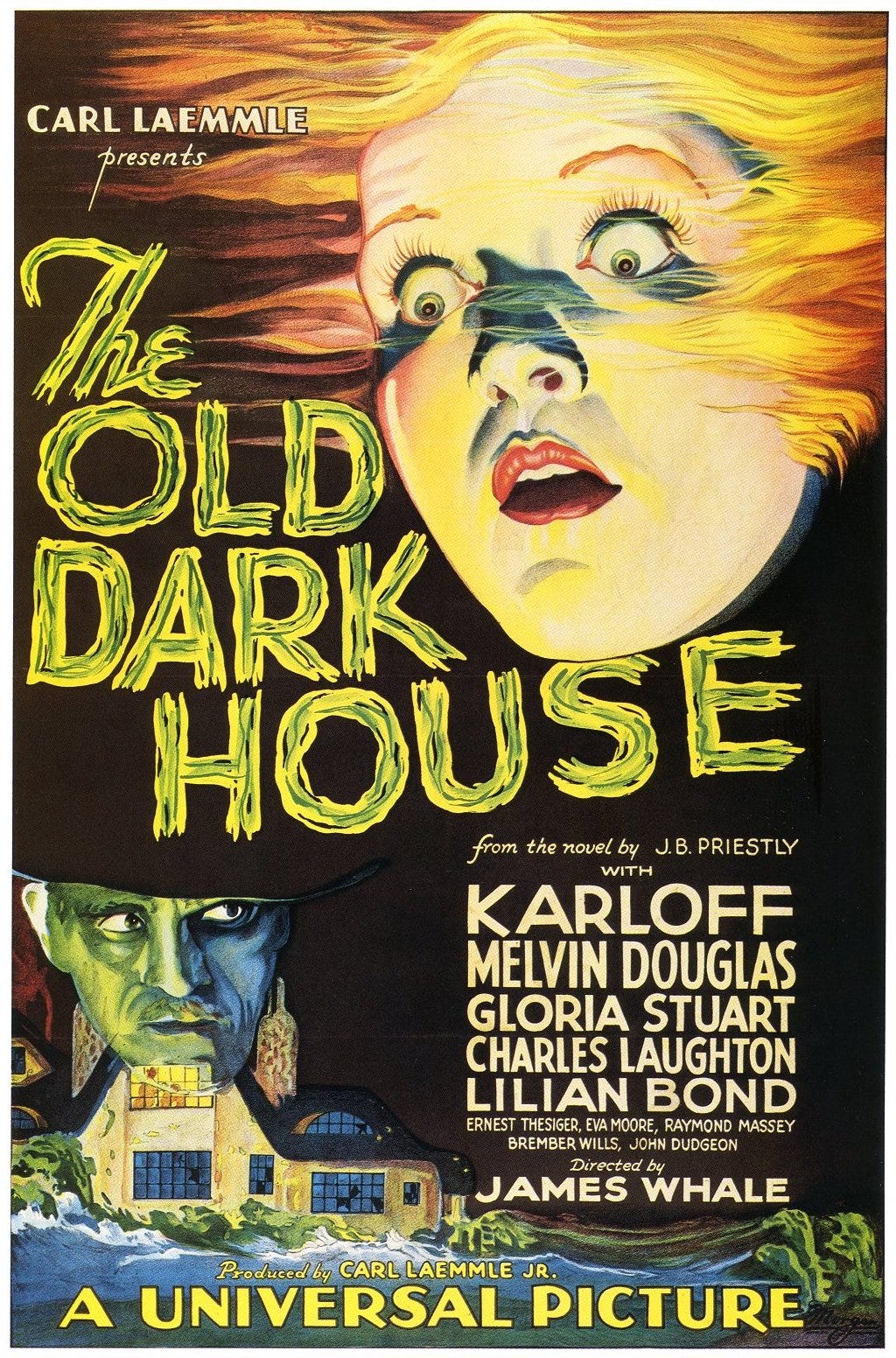
Any movie about people stuck in a house seems relevant today, doesn’t it? Torrential rains and landslides force two carloads of tourists to take shelter for the night in the old dark house of the title. They’re greeted by a horribly scarred mute waiter, played by Boris Karloff, and by two bickering elderly siblings who make occasional reference to their sinister family history. It transpires that there’s an aged patriarch bedridden upstairs and a madman in the attic; before dawn there will be an attempted arson, a death, and a marriage proposal.
The Old Dark House is based on J.B. Priestley’s novel Benighted, which apparently employs tongue-in-cheek Gothic tropes to delve into WWI survivor’s guilt. Aside from one line, this adaptation jettisons the WWI material to focus on the alternately silly and sinister aspects of the plot. This film reunites Boris Karloff with his Frankenstein director James Whale, but Karloff’s role here is less memorable, and the film as a whole is less successful. I liked it, but it’s not going to be my first, or even my tenth, recommendation to my friends.
La Dolce Vita (1960, d. Federico Fellini) (Watched on Blu-Ray)
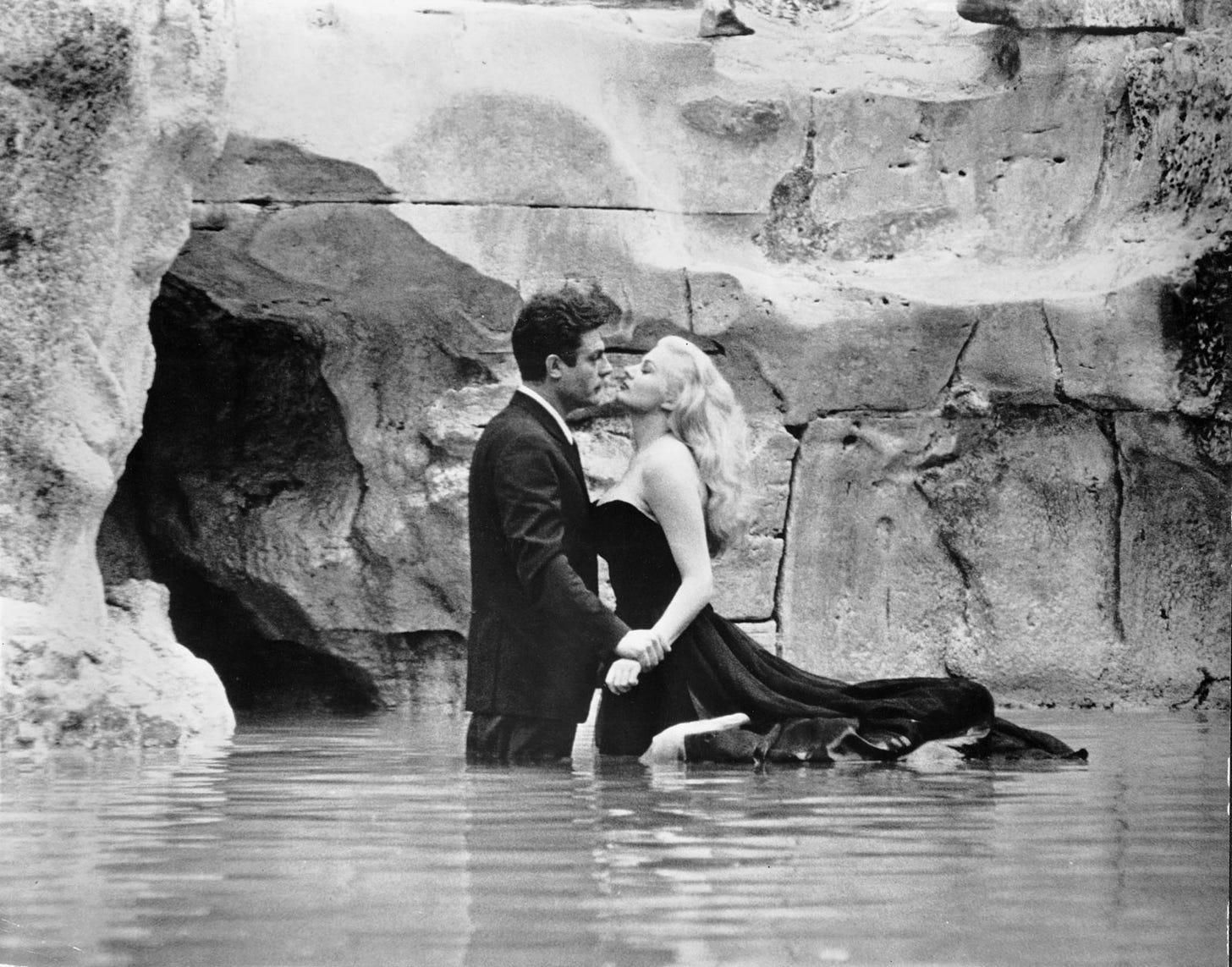
I wrote above that What We Talk About When We Talk About Love was a great book, and different from the one I thought I’d be reading. La Dolce Vita is a great film that isn’t the one I thought I’d be watching. I’d assumed that the Trevi Fountain encounter with Anita Ekberg, pictured above, would be an epiphanic moment at the close of the film; in fact it happens quite early on and Marcello Mastroianni’s Marcello Rubini ends his tour of the sweet life further from epiphany than he began it. La Dolce Vita is a long film, and to some extent a punishing one. Never have I felt more drained and exhausted watching the world’s wealthy and frivolous and beautiful and empty. Sixty years on, it continues to stun and enthrall.
What a pleasure it is to be surprised by great art.
I’m So Excited! (2013, d. Pedro Almodóvar) (For rental on streaming services)
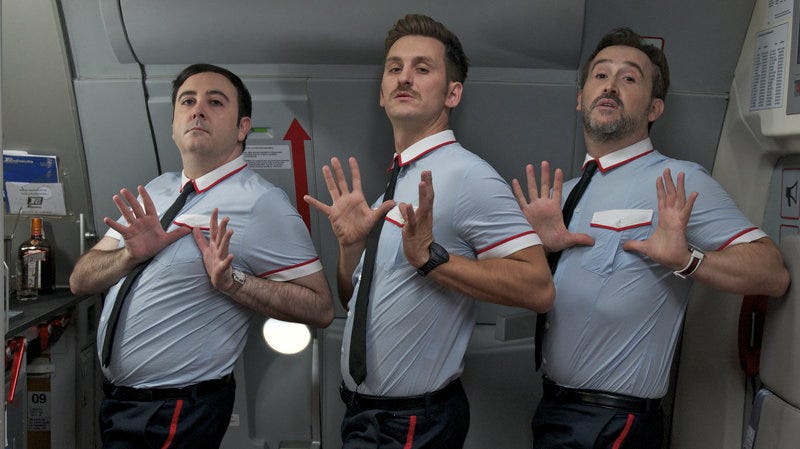
Almodóvar is never staid, but sometimes, as with the Oscar-nominated Pain and Glory, he’s serious. I’m So Excited! Is not serious; it’s a return to the queer sex comedy of early movies like Tie Me Up! Tie Me Down! and Women on the Verge of a Nervous Breakdown.The pilots, the stewards, and the first-class passengers of a possibly doomed flight — Antonio Banderas and Penelope Cruz, in three-minute cameos as members of the ground crew mess up the landing gear — turn to drink, drugs, and debauchery as air control searches for a place to attempt a landing. Passengers include an aging dominatrix with compromising tapes of powerful men, the hitman sent to kill her, a small-screen Casanova, a psychic looking to shed her virginity, and a shady businessman on the run from cops. Over ninety minutes, fluids are swapped, secrets are exchanged, and chaos reigns. There’s even a song-and-dance routine from the three campy stewards. Minor Almodóvar, but I didn’t regret watching it.

“As some of you know, I’m currently alone in a house and have been for something around forty-five days. For all that I’m a complete introvert, I still can’t quite get used to this way of life. I suppose a ghost haunting empty halls must feel much the same way I do.”
This tugged at my heartstrings!
Enjoy these musings spurred on by your isolation. It creates a fellow feeling in being social distanced right now in a social media manner. Look forward to reading more and like the status on your daily thoughts and doings plus the book and movie thoughts.